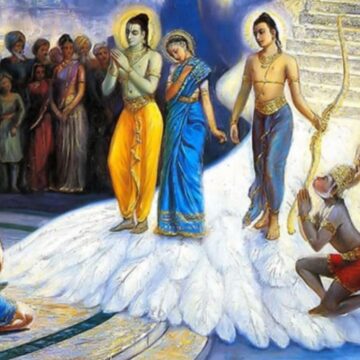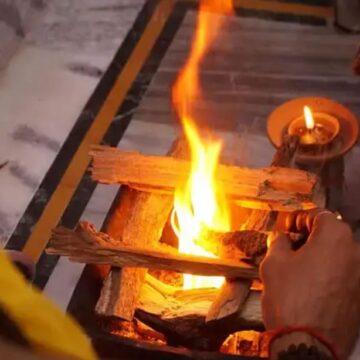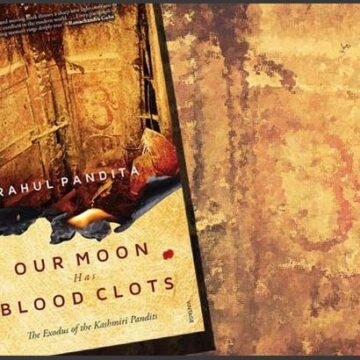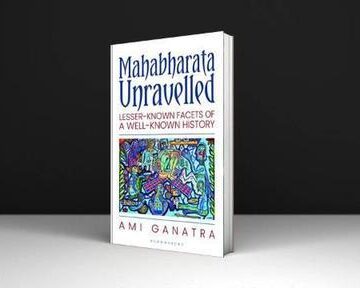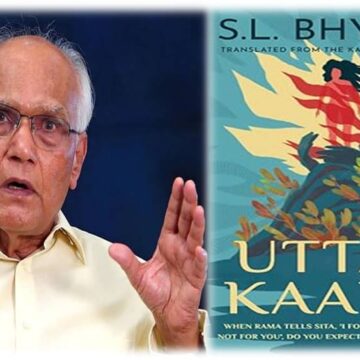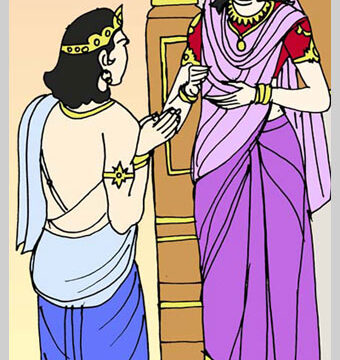"To fully understand the social significance of Mandirs, one must delve into their profound philosophical underpinnings, historical moorings and cultural importance. Our Mandirs are the veritable embodiments of our culture, philosophy, and spirituality. Rooted in ancient Hindu tradition, Mandirs play a vital role in shaping the social and cultural fabric of India."
Tag: <span>dharma</span>
Bridging Ancient Philosophies: The River of Consciousness
"Rather than getting entangled in doctrinal differences, it might serve us better to find the confluences, the shared understandings, and the universal truths that have guided humanity for millennia. In that spirit of unity, the river of consciousness presents a philosophical bridge, beckoning us to ponder, reflect, and ultimately understand."
Trying to Understand Shri Rama
An analytical look at some of the more controversial actions of Shri Rama, from the lenses of ancient as well as modern thoughts.
Dharmik View on Human Birth and Grihastha Ashrama
Shashank Poddar throws light on the shastrik view and importance of grihashta ashrama in this beautifully researched piece.
The Significance of the Bhakt and Bhakti in Hinduism
Bhakti, as a profound spiritual path within Hinduism, encompasses the deep love, devotion, and surrender to the divine. While the term "Bhakt" has gained popularity in political contexts, its use as a label for followers of a particular leader is objectionable as it trivializes the spiritual essence of Bhakti.
“Our Moon Has Blood Clots” by Rahul Pandita – A Review
Mayank Dhar, A Kashmiri Pandit, pens a nuanced and balanced review of Rahul Pandita's book "Our Moon Has Blood Clots", with praises where the author has earned them and pointed questions where the author deserves them.
Thoughtful Reflections on ‘Mahabharata Unravelled’ by Ami Ganatra
A deeper dive into some characters and aspects of Mahabharata with the help of Ami Ganatra's book "Mahabharat Unravelled".
“Uttar Kaanda” by S. L. Bhyrappa – A Review
In the novel, Uttara Kaanda, renowned novelist, Shri S L Bhyrappa is on an odyssey. An odyssey through the eyes of his protagonist, Sita; the daughter of Janaka, wife of Rama, and mother of Lava-Kusha but also something more, something that belongs only to herself. Something that makes Sita who she is.
Sita is not ‘Devi’ in Uttara Kaanda, but she is most definitely either our Mata, our Bhagini or our Kanya. That is why our hearts beat with Sita of Uttara Kaanda.
‘Mahabharata Unravelled’ By Ami Ganatra – A Review
Ami Ganatra's book "Mahabharata Unravelled" is going to be revelatory for those who are used to a steady diet of modern, almost fictitious and agenda driven, retellings, or rather remodellings, of dharmik epics. It must be read as a stepping stone for the study of the source text to understand and absorb the main epic in a deeper manner.
The Overlooked Brilliance of Sumitra
The Ramayana is not simply a chronicle of Shri Rama's life and times on Earth, but also an epic saga that holds within itself much for both the devout and the rational.
Each of the characters is fascinating, but there are some that shine like gems in their limited roles without making too much noise. One such character is that of Sumitra, one of the three chief queens of king Dasharatha of Ayodhya, the other two being Kausalya, and Kaikeyi. This article aims to understand Sumitra's character in deeper detail through textual references from both the Valmiki Ramayana as well as Tulsidas's Ramacharitamanasa.



